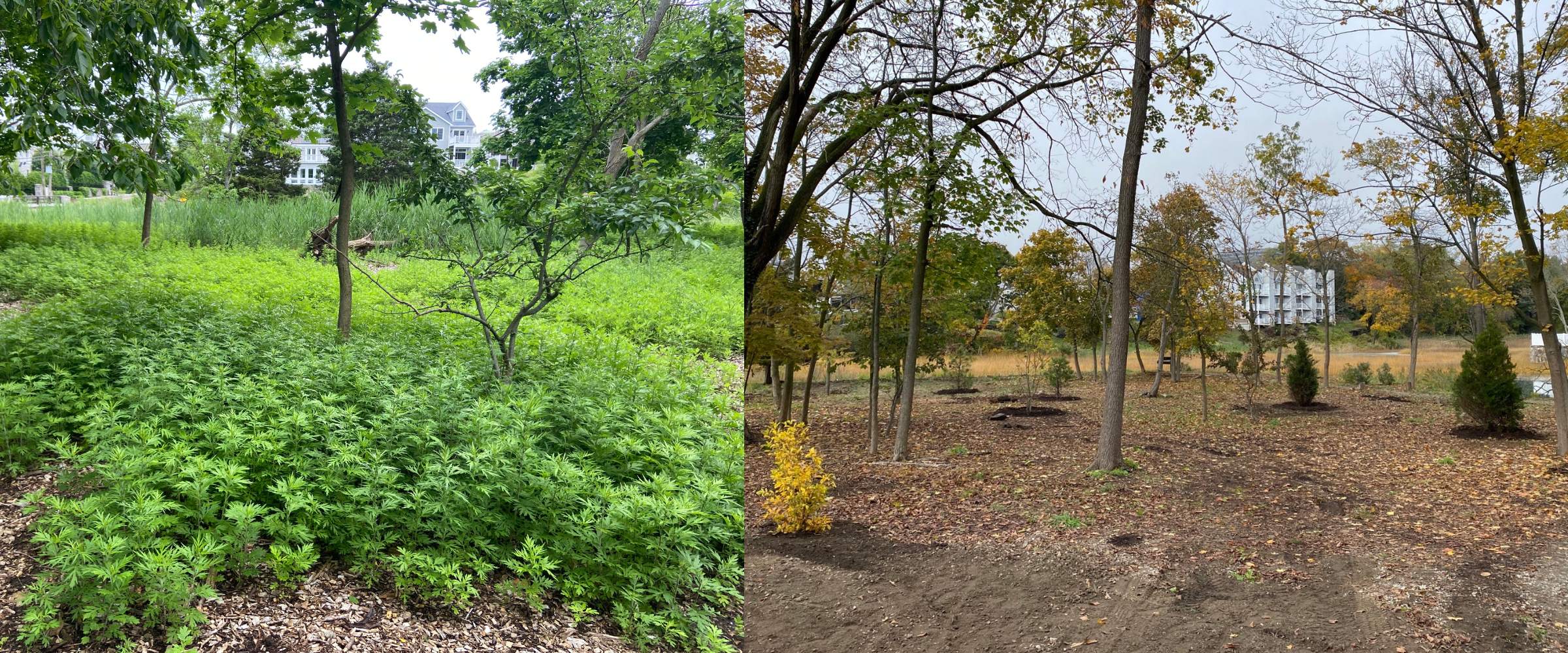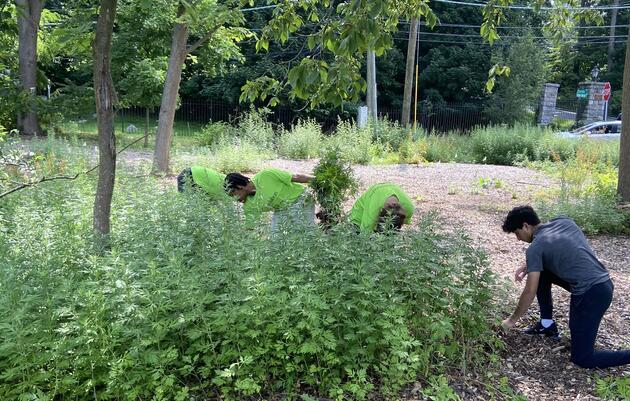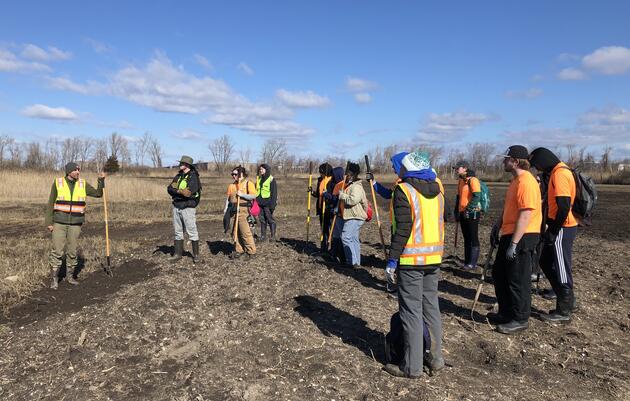We're raising funds to support the final stages of this essential restoration project. Every donation made by April 21 is doubled thanks to a generous match by Sustainable CT's Community Match Fund—give today!
Across our Greenwich Audubon Center sanctuaries and habitats, we have begun implementing a multi-year plan to reestablish a diverse mosaic of plant communities that will sustain an equally diverse array of birds and other wildlife.
While much of this habitat consists of deciduous forest and early-successional meadow, there is one location within the Center's network that stands apart – the Oneida Sanctuary.
Though less than four acres in size, Oneida preserves and provides access to an increasingly rare tidal wetland ecosystem. These wetlands used to be abundant in Connecticut, but pressures from land development, pollution, invasive species, and the impacts of climate change have led to significant declines. In Greenwich alone only 250 acres of tidal wetland remain of the roughly 1,800 acres recorded in 1836 (a loss of over 86%!).
To help ensure the Oneida Sanctuary remains a thriving piece of this critical yet fragile network, student interns participating in our summer Eco-Leadership Corps program dove right in to aid in site improvement efforts. The team worked tirelessly to remove large quantities of invasive plants (primarily mugwort and phragmites), lay the groundwork for a new a gravel trail, design informational signage, and coordinate community outreach.
Following the Eco-Leadership team’s efforts, the next big step was to schedule a large-scale restoration planting effort. Greenwich Audubon Center Land Steward Matt Viens reached out to corporate partner Regeneron and established a plan to host volunteers through the company’s annual “Day for Doing Good” initiative, a week of local service opportunities for Regeneron employees.
Fairfield-based native plant nursery NATIVE LLC helped identify seven native trees and fourteen shrubs for the planting, all of which were selected for their wildlife value, year-round interest, and tolerance of coastal conditions.
On October 26, Center staff were thrilled to host 16 volunteers who helped put all plants into the ground in just under three hours.

Pitch pine (Pinus rigida), Eastern red cedar (Juniperus virginiana), Red Oak (Quercus rubra), Sweetbay Magnolia (Magnolia virginiana), Northern Bayberry (Myrica pensylvanica), Sweet Pepperbush (Clethra alnifolia), Beach Plum (Prunus maritima) and Inkberry (Ilex glabra) will now thrive at the site, providing flowers for pollinating insects and fruit for migratory and overwintering birds. Not to mention many of these plants are known for their host benefits to larval stage insects – important food for growing chicks!
"It is always a pleasure to promote biodiversity, especially in urban areas as the high visibility inspires us to make environmentally beneficial decisions on a daily basis. Providing this plant material is very fulfilling and we look forward to helping with the Greenwich Audubon Center’s next planting," said Chris Teter, Nursery Manager for NATIVE LLC.
“It’s been incredibly special to see so many people actively involved in the restoration efforts at Oneida,” added Viens. “This project wouldn’t have been possible without our intrepid Eco Leaders, Regeneron’s committed volunteers, and the knowledgeable staff at Native. It’s critically important that we work to protect our remaining tidal wetlands and other threatened coastal habitats, and to do so in a way that engages the broader community will hopefully help educate and inspire the environmental stewards of tomorrow.”






